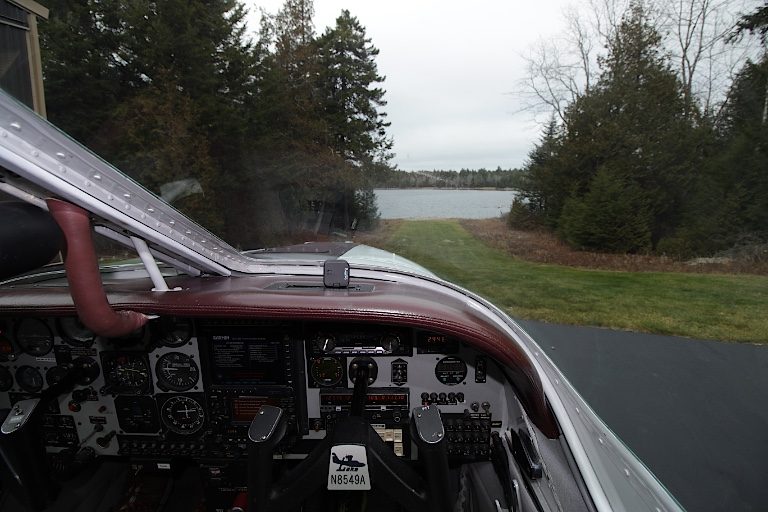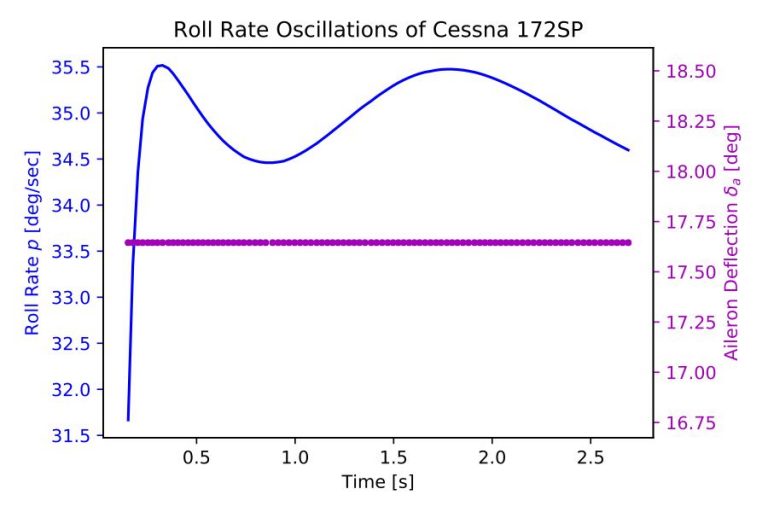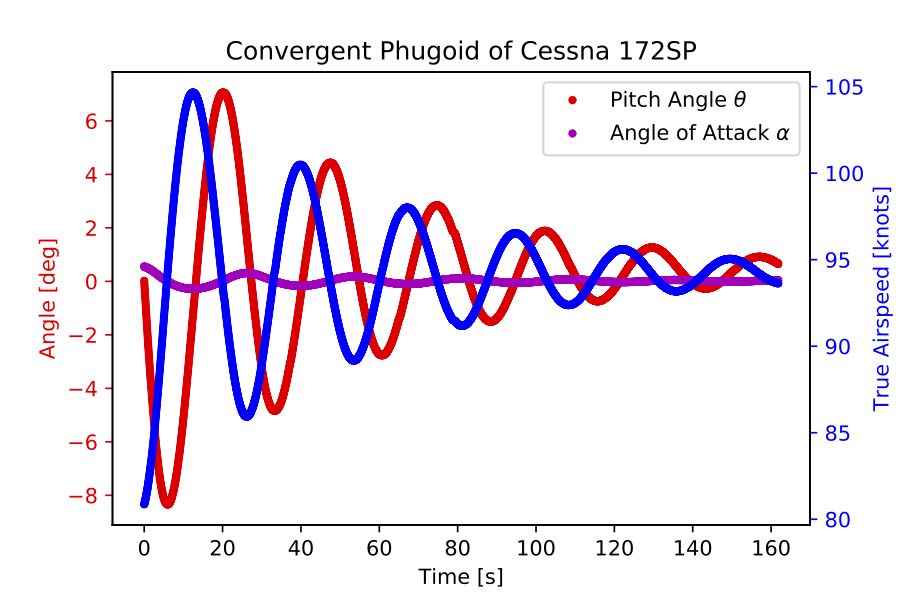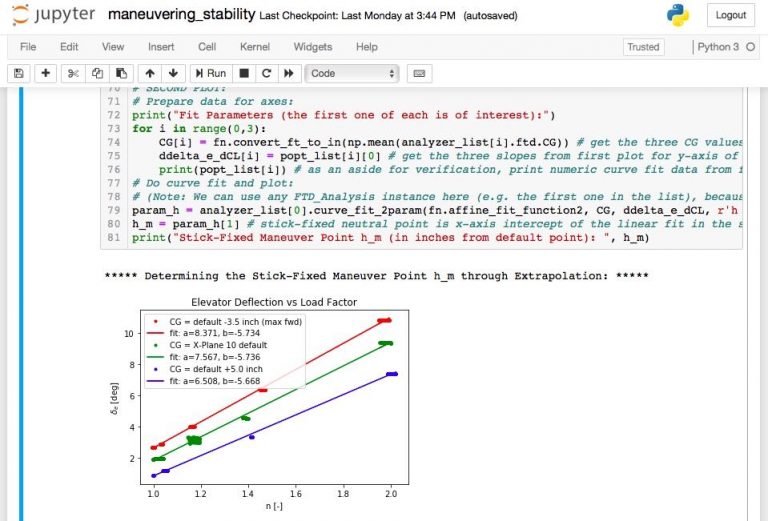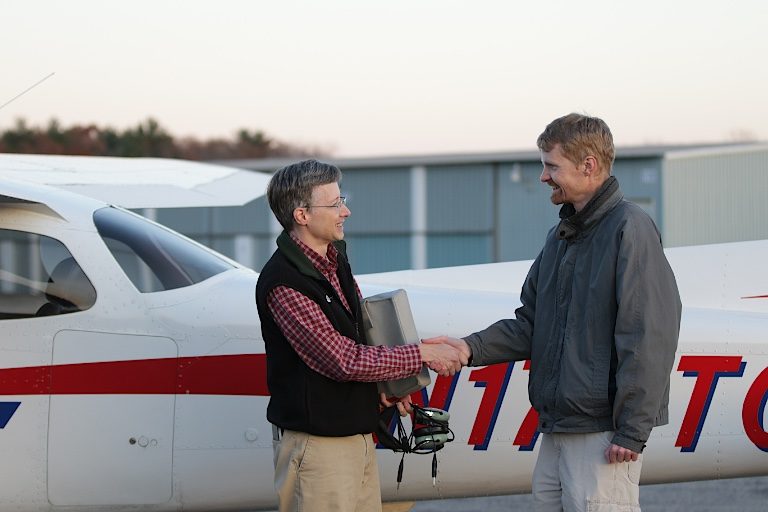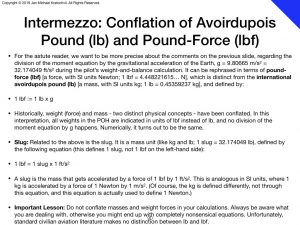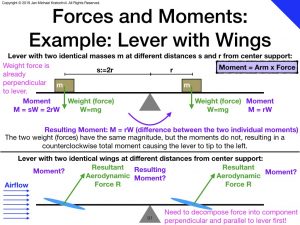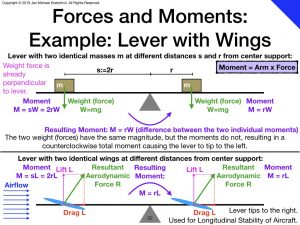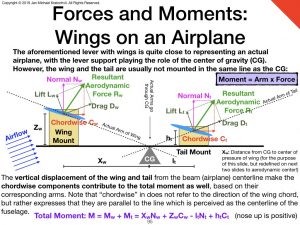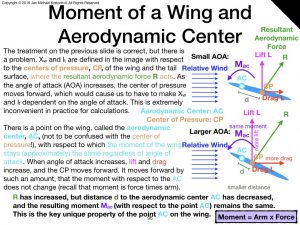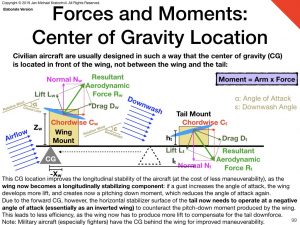Test Pilot Theory
Courses based on the publicly available textbooks of the USAF Test Pilot School,
with flight test exercises and data analysis on your home computer.
Introduction
Flight test engineering is a broad field combining multiple disciplines. Our test pilot theory course series focuses on the physics and mathematics of flight test engineering. This includes academic theory, data analysis, and practical aspects like flight test techniques. The courses cover flying qualities and performance, and largely omit general organizational aspects and procedures of flight test engineering, like writing of flight test plans, aircraft certification regulations, and hardware aspects like instrumentation, etc. However, references for self-study of these topics, as well as for systems testing, are provided.
We are currently restructuring our course series and are in the process of developing a test pilot course under 14 CFR Part 141, Appendix K (Special Preparation Courses), Paragraph 8 (at present we have no projected completion date, as it is a rather large undertaking). If you are interested in this test pilot course, we suggest you take our prerequisite course Data Analysis and Computing with Python for Pilots and Flight Test Engineers in the meantime. It covers some of the underlying mathematics, including more advanced topics such as dynamic systems and control theory, and teaches you how to implement these calculations on a computer. In order to keep the in-person instruction manageable (i.e. weeks instead of months), we are stuffing as much as possible into this online prerequisite course.
As is the case with all accelerated aviation courses, such courses require diligent self-study beforehand (accelerated does not mean that you will learn less in the course or that your brain will magically absorb the material faster). In order to keep costs low and your progress rapid, you will be expected to do a large amount of guided self-study. To assist you in the process, we have compiled a list of references in our bibliography section, which we encourage you to study extensively. This is not a drawback, because some chapters of these (in some cases somewhat dated) materials are actually still in use in textbooks at internationally recognized test pilot schools today.
Tracks
Our test pilot theory course series can be adapted to the individual needs of our clients, depending on the background and goals of our clients:
- Track 1: for military and civilian pilots preparing for a test pilot selection or – after having been successfully selected – preparing for attendance of a test pilot school (typically strong pilots with varying degrees of physics and mathematics education).
- Track 2: for engineers interested in learning selected aspects of flight test engineering, who do not wish to spend the money it would cost to attend a test pilot school or university program (typically strong engineers with varying degrees of pilot experience).
- Track 3: for ambitious high school students aiming to become test pilots and aerospace engineers (likely neither experienced pilots nor engineers yet, but young minds destined soon to become both!).
We describe these three tracks in more detail below.
Track 1: For Test Pilot Candidates
The failure rate for the entrance exam at internationally recognized test pilot schools can be as high as 80% on a first attempt. Save yourself the stress of having to retest (and possible ramifications of a second failure) and let us prepare you beforehand.
Because flight test engineering is such a broad field, some test pilot schools cram over a month of academic material into the five days of a one-week academic module. From personal experience, passing the exam at the end of the week is doable without prior preparation, if you come in with a strong academic background and are willing to sleep just a few hours each night. But why not save yourself the stress and come well prepared? You will also retain more in the class.
Finally, it goes without saying that, while you may pass the exam, you will not have internalized the matter nearly as much as is desirable. For instance, you will not have the time to write a bunch of associated software for the data analysis or for the tutorials as would be ideal, especially if your software development skills are those of a person whose main professional focus is being a pilot.
Finally, we can also take the time to cover selected topics in more depth or beef up your background in certain areas of mathematics.
Track 2: For Engineers
People attending this track come in with an engineering-grade understanding of college-level mathematics and physics, but may not be pilots. Their focus is more on the data collection and analysis side, which will involve programing exercises in Python and the Jupyter environment. For this reason, ideally, they would also have some prior programing experience. Part of these clients’ aim is to be able to handle the data and to compute. Therefore, we will have to cover some topics more deeply, for instance kinematics, where we will introduce in addition to Euler angles also the directional cosine matrix (DCM) and quaternions. The equations of motion will be derived in detail and linearized for stability studies. We will next establish an overview of different flight test topics in the areas of flying qualities and performance, with an emphasis on flight test relationships.
Track 3: For High School Students
If you are a high school student, we offer you this course series for free, as a pro bono contribution to the aviation community, provided we can attach you to an existing ongoing course. What kind of courses we would start you out with, depends on your background. At a very minimum, we would expect you to have worked through all the lessons of our general pilot ground school and through all the publicly available lessons our our Data Science and Computing with Python for Pilots and Flight Test Engineers. If we are instructing you pro bono, we also expect you to put in a correspondingly larger effort from your end as well. If you have questions, you can ask during our office hours.
The tools acquired in the process of even preparing for our test pilot course series, e.g. programing in Python and analyzing/displaying data in the Jupyter environment, will serve you well in a variety of professions later, not just in aerospace and flight test engineering.
Above: A simple flight simulator setup on a 2013 MacBook Air.
Above: Oscillations in the roll rate after an abrupt aileron step input has been applied during a flight test investigating the roll mode of lateral-directional dynamic stability. Roll damping leads to a finite roll rate even if continuous full aileron deflection is held, but oscillations occur around this roll rate despite steady aileron control input.
Above: The phugoid mode is one of the two modes we will encounter during the longitudinal dynamic stability flight tests. It is a long-period oscillation in pitch angle and airspeed, with the angle of attack remaining almost constant.
Above: Jupyter notebook document coded in Python, showing part of the calculation to determine the stick-fixed maneuver point. You will be working with this notebook during the part of the course covering maneuvering stability.
Pre-Course Preparation
In Track 1 and Track 2, the course series opens with a two-day introductory course, followed by one-on-one instruction and guided reading billed by the hour.
In order to keep our course prices low, the amount of time the instructor spends with the students has to be kept relatively brief. Therefore self-study in encouraged whenever possible. This includes preparation for course attendance. In order to assist you in preparing for our courses, we have taken the time to write a series of freely available primers, which we would like to encourage you to study intently beforehand:
Mathematics:
- Linear Algebra Primer
- Linear Ordinary Differential Equations Primer
- Multivariable Calculus Primer
- Complex Analysis Primer
Kinematics (description on motion without physics, only “geometry”):
Physics (includes forces and moments, mass and inertia tensor, etc.):
Data Analysis and Computer Programming:
We would like you to work through the freely available parts of the above articles and courses, before starting the test pilot course series with us.
Additionally, as mentioned above, you can also get yourself a head start on the main course content by consulting some of the flight test engineering references we have compiled on the corresponding page of our bibliography section on this website.
Modern, Easy-To-Use Platform
Throughout the courses, you will be (optionally) programing in Python using the Jupyter Notebook environment, which is excellently suited for this kind of interactive development work. You can install both conveniently on a variety of computer operating systems (including Mac OS X, Linux, and Windows) using Anaconda.
Universally Applicable Skills
Courses
Prerequisites Course
Prerequisites in Mathematics and Computer Programming
This course has been moved entirely online in order to save costs, and is now integrated in the for-pay part of our course Data Analysis and Computing with Python for Pilots and Flight Test Engineers. This approach will also greatly foster your ability to implement the analyses we do in code. Since this course is mostly coding focused, in order to brush up on theory you may additionally wish to refresh your underlying theoretical knowledge with our mathematics primers (linear algebra, linear differential equations, multivariable calculus, complex analysis) first. For your benefit, we have posted these primers in the articles section of this website.
Admittedly, some of these primers are rather detailed and go well beyond what you will need. But the details will make you a more knowledgeable engineer. For instance, knowing the residue theorem of complex analysis will give you a deeper appreciation of the way the inverse Laplace transform is often practically calculated from its formal definition (even though you will always use tables, when you use it during our discussion of flight dynamics and control theory) and it will also allow you to understand the proof of the Kutta-Joukowski theorem easily.
Duration:
Online at your own pace
Price:
$99
Main Course Series
Course 1: Introduction to Flight Test Engineering Physics
This pilot-centric course builds on your existing knowledge and experience as a pilot and puts it on a formal footing, which will enable you to understand aerospace engineering literature with ease. Basics of flight dynamics will be covered. The course will also give you an overview of the different topics of performance and flying qualities covered in a standard test pilot school curriculum. Some flight test techniques will be mentioned. We will derive the fundamentals diligently (e.g. equations of motion) to give you a solid foundation, but for more advanced topics we mostly present the results for time reasons. You can later go and read the derivations yourself in the publicly available USAF TPS textbooks or take a more detailed class with us (see Course 2 below).
Duration:
2 weeks
Price:
Call for Pricing
(Discounts available for groups)
Sample topics:
Course 2: Guided In-Depth Self-Study
To cover particular flight test engineering topics more in depth, beyond the above introductory course, we offer a guided self-study course individually tailored to your needs and one-on-one instruction billed by the hour. You will read chapters in one of the USAF TPS Textbooks at home and – optionally – collect flight test data with your simulator, and write Jupyter notebooks in Python to evaluate it. In class you will have the opportunity to ask questions, discuss your homework, and do exercises.
Duration:
as needed
Price:
$60/hour

